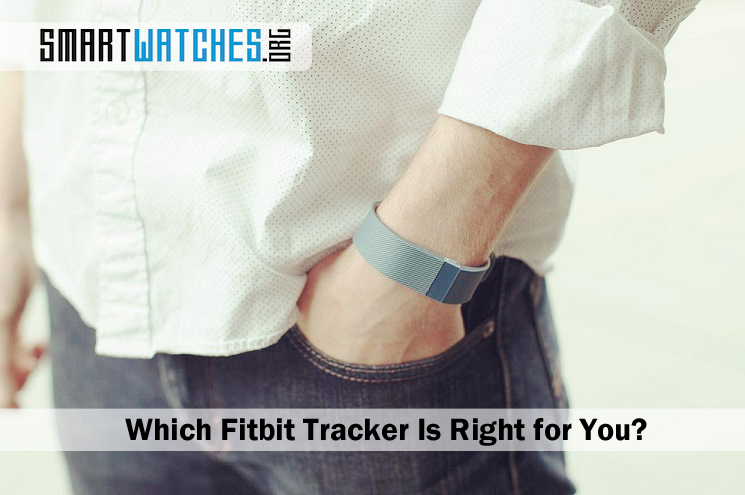So you’ve done all your research and you narrowed the list of wearables you might want to buy down to one brand: Fitbit. You chose it because of its excellent selection of health tracking features, reputation and modern design.
Related: See our list of Top Fitness Trackers
Congratulations, you have definitely chosen a worthy fitness tracker.
There’s just one problem. Which Fitbit model are you going to buy? Just going over all the options, there’s the Fitbit Charge, Charge HR, Surge, Flex, One, and Zip. They all have a unique design and feature set that make them stand out from the rest.
How can you be sure which model is for you? Which one of them is the best? Since the Fitbit models range in price from about $59.99 all the way to $249, there’s a huge difference between each one. Choosing the appropriate model can certainly be daunting.
We’re going to break them all down for you so that you can make a more informed decision about which one to get. If you don’t want a Fitbit, then obviously this isn’t the right piece for you. Might we suggest our list of the five best smartwatches for health and fitness?
Fitbit Surge
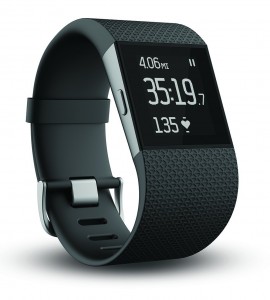 The Fitbit Surge is the most expensive model in the lineup because it’s more akin to a smartwatch. It can display notifications and alerts, along with Caller ID info when paired up with a connected phone. You can also use it to control your music remotely while you workout or exercise.
The Fitbit Surge is the most expensive model in the lineup because it’s more akin to a smartwatch. It can display notifications and alerts, along with Caller ID info when paired up with a connected phone. You can also use it to control your music remotely while you workout or exercise.
What really makes it worth the price, however, is that it includes integrated GPS which means you can track your running or walking routes directly on the device. This is great if you’re in an area with spotty coverage, or you don’t want to carry a smartphone along with you everywhere you go.
As with most Fitbit devices, it can handle everyday tracking, and you can download the information as you see fit, whether that be on a computer or smartphone. It also has the added bonus of being 5ATM water resistant, though the company advises against wearing it while you’re swimming it in the pool.
The biggest downside to the Surge is that it’s not the most attractive wearable, in general, or in the entire Fitbit lineup. If that doesn’t bother you then it’s still an extremely capable device.
You can pick up the Fitbit Surge for $249.
Fitbit Charge HR
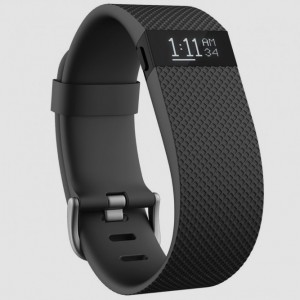 The Fitbit Charge HR is the second most expensive device in the company’s lineup and for good reason. The Charge HR is one of the best fitness trackers you can find on the market today.
The Fitbit Charge HR is the second most expensive device in the company’s lineup and for good reason. The Charge HR is one of the best fitness trackers you can find on the market today.
What makes the Charge HR more expensive – and better than most of the cheaper models – is that it continuously tracks the wearer’s heart rate all day and night and not just during activity. This gives you a more accurate reading of your personal health and the kind of fitness information you’re likely most interested in: like total calories burned, or steps taken.
The Charge HR has the same design as most of the other Fitbit devices, with a sporty band and small OLED display for readouts. The screen will show fitness info, the time, and even caller ID info. Plus, with a recent update Fitbit enabled automatic exercise detection, meaning the Charge HR will know exactly when you start working out.
The Fitbit Charge HR is $149.95.
Fitbit Charge
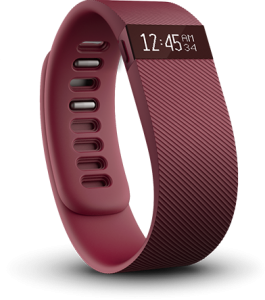 Despite having almost the same name as the Charge HR, the Charge is a completely different model with its own set of features. Namely, it does not include continuous heart rate (BPM) tracking and so it doesn’t support automatic exercise detection either – which is triggered by heart rate changes.
Despite having almost the same name as the Charge HR, the Charge is a completely different model with its own set of features. Namely, it does not include continuous heart rate (BPM) tracking and so it doesn’t support automatic exercise detection either – which is triggered by heart rate changes.
Oddly enough, the Charge has the most in common with the Fitbit Flex when it comes to features. The only real difference between the two – other than overall design – is that the Charge will count the number of floors climbed when you move up stairs, and it will also track sleep automatically. That just makes it easier at night by eliminating the manual tracking requirement.
It goes without saying, the Charge includes a small OLED display for data readouts and notifications.
It’s up to you whether or not the Charge is worth the higher price tag. You can buy the Charge for $129.99.
Fitbit Flex
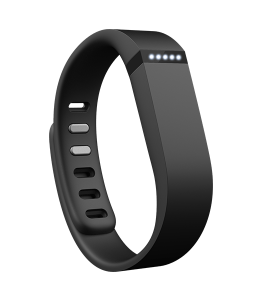 The Fitbit Flex is the oldest of the bunch, with a variety of features that have allowed it to be a mainstay in the fitness tracking market. It can track fitness data, display light notifications, and offers a full five to seven days of battery life on a single charge.
The Fitbit Flex is the oldest of the bunch, with a variety of features that have allowed it to be a mainstay in the fitness tracking market. It can track fitness data, display light notifications, and offers a full five to seven days of battery life on a single charge.
The trade-off is that it doesn’t include a lot of the advanced features its more expensive – and newer – brethren do. It won’t show the time, messages or connected notifications, and it won’t show Caller ID info either.
It will track your sleeping habits, but you’ll need to activate the feature manually at night. Furthermore, it can vibrate to give the wearer silent alarms, as can most of the other Fitbit devices above.
If you want a full-featured fitness tracker that won’t break the bank and isn’t too bulky on your wrist then you can’t go wrong with the Flex. You can pick one up for about $99.99.
Fitbit One
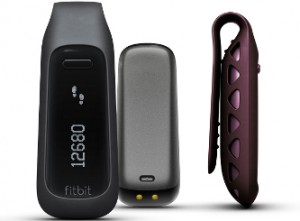 The Fitbit One is a unique device from the company because it’s not a wrist-worn tracker. Instead, it’s a small clip-on device which you can slide onto the collar of your shirt, waistband or similar piece of clothing. Like the Charge, it can track elevation, meaning the number of stairs climbed. It also includes a clock, which is not a feature all the Fitbits have in common.
The Fitbit One is a unique device from the company because it’s not a wrist-worn tracker. Instead, it’s a small clip-on device which you can slide onto the collar of your shirt, waistband or similar piece of clothing. Like the Charge, it can track elevation, meaning the number of stairs climbed. It also includes a clock, which is not a feature all the Fitbits have in common.
Sleep tracking is also available, but it needs to be manually activated. Plus there’s the option to track all the regular fitness stats you’d expect like calories burned, steps taken, and more. The OLED display will provide a read out of collected info, and the device will last for ten days on a single charge. You couldn’t ask for more from this little performer.
The Fitbit One is $99.99.
Fitbit Zip
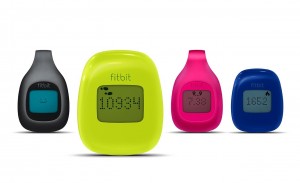 The Fitbit Zip is the cheapest of the group, and like the One it comes in the form of a clip-on. The Zip will track calories burned, steps and distance traveled, and total active minutes. It will double as a clock when you want to know the time, and all the data can be synced wirelessly with a phone or computer.
The Fitbit Zip is the cheapest of the group, and like the One it comes in the form of a clip-on. The Zip will track calories burned, steps and distance traveled, and total active minutes. It will double as a clock when you want to know the time, and all the data can be synced wirelessly with a phone or computer.
Perhaps the best part is that the Zip is available in several different colors, all of which are pretty bright. Then again, that’s not nearly as impressive as the fact that this thing has a six-month battery life. It’s splashproof, which means it won’t get damaged in the rain or from sweat – although you don’t want to submerge it in water.
If you’re on a budget and just want a simple fitness tracker than the Fitbit Zip is the way to go. It will set you back about $59.99.
Do You Know Which Fitbit Fitness Tracker You Want Yet?
Now that you’ve seen what each one of these Fitbit models has to offer, you should have a much easier time deciding which one is right for you — or the person you’re buying it for! Sometimes, what helps even more during a purchase is hearing from folks who already own the product. If you own a Fitbit, feel free to weigh in with your thoughts on the matter!

